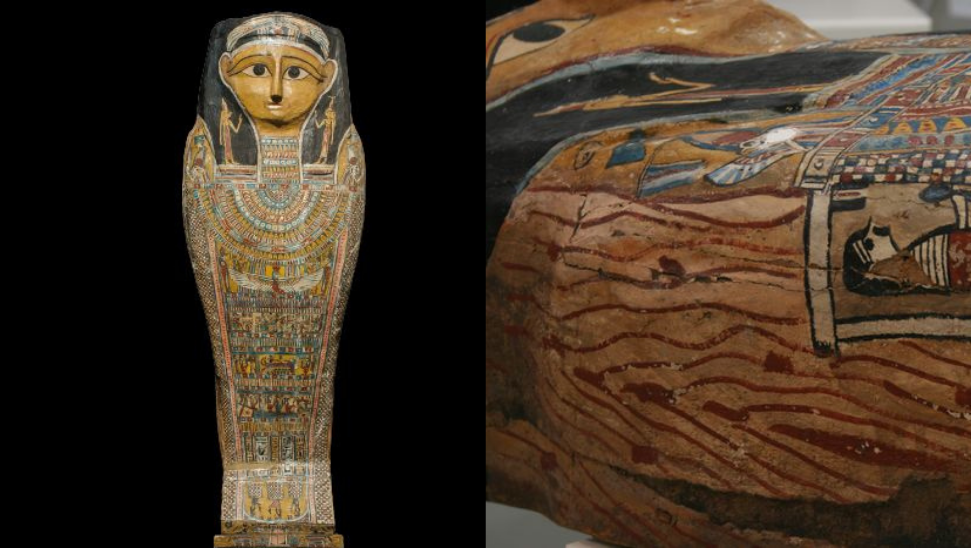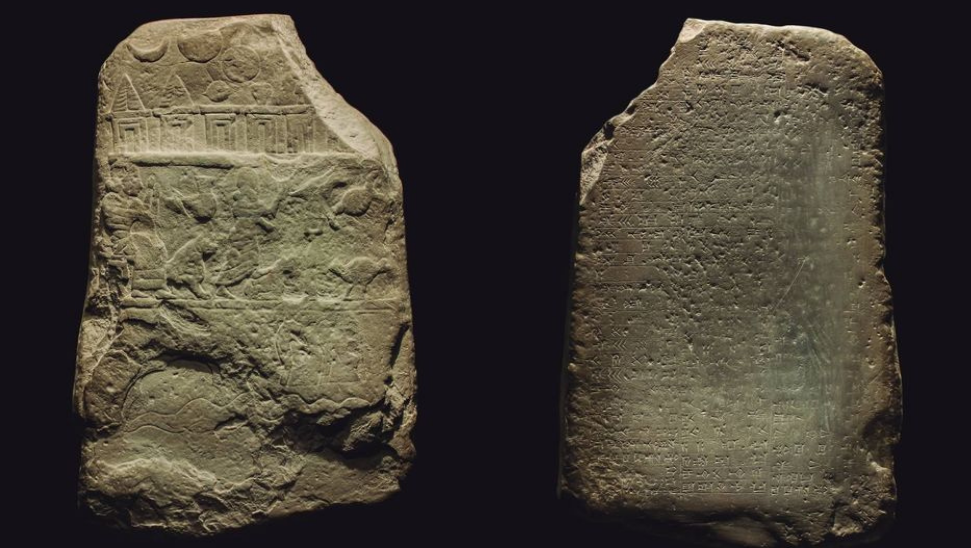Written by Tom | 9th April 2021
The Mediterranean region is one of contemporary society's main points of reference when it comes to ancient culture. It has given rise to some of the most important and pioneering civilisations: the Egyptians, the Phoenicians, the Greeks and the Romans to name a few. Archaeology Expert Ruth Garrido Vila walked us through a dedicated collection from ancient Mediterranean cultures in Malaga’s Ifergan Museum and explained why there’s still much to learn from these salvaged objects.
It’s staggering to think that schools of thought created thousands of years ago have made their way to the present. The ancient Greeks, who continue to inform the crux of modern philosophy, gave us an unwavering fascination with the stars, and alongside the Romans, have inspired some of history's greatest literary accomplishments (namely the works of John Milton, Shakespeare and Dante). That’s not to say we’ve kept absolutely every norm passed down from ancient cultures—we’ve since realised that the earth is not as flat as we once thought and the bloody carnival of gladiatorial battle is perhaps best saved for the silver screen—but we’re continually drawing on their knowledge and learning more about the limitations of our own.
“It’s why the field of archaeology is so important”, says Ruth. “[Archaeology] is what has helped us to learn and understand the most about our own history. An archaeological piece is much more than a nice object. It is a unique item that, after surviving many centuries, is still here to tell us a story about ancient cultures, habits, rituals, society and the way they understood life in general”. While there’s no lack of artefacts and relics to choose from, some pieces are definitive symbols of the civilisations they hail from.
Death in ancient Egypt – the sarcophagus
Few people died as splendidly as the wealthier denizens of ancient Egypt. Their bodies were laid to rest in sarcophagi (plural for sarcophagus); stone coffins or containers. The name sarcophagus comes from the Greek phrase lithos sarcophagus (‘flesh-eating stone) due to the limestone from which many sarcophagi were made from, which was believed to accelerate the decaying of the body.
While other ancient civilisations like the Romans also used sarcophagi, it’s characteristic of ancient Egypt, says Ruth. “Sarcophagi are one of the most representative and interesting pieces of ancient Egyptian culture as they stand for mummification, the way ancient Egyptians prepared bodies for the afterlife and the way they believed in it”.

This sarcophagus depicts scenes from the Book of the Dead
It’s easy to misconstrue sarcophagi as purely vessels of the dead and the ancients’ interpretation of coffins. On the contrary, sarcophagi were canvasses for elaborate designs. They provide insight into how the ancient Egyptians viewed death and the afterlife. The Egyptians were great believers in the afterlife and the sarcophagus was designed with the intention of being the place of eternal dwelling. Its designs often paid homage to the life of the deceased, with their name inscribed, as the Egyptians believed that remembering one’s name assured the person would live on in the afterlife.
Over time, sarcophagus design grew more ornate, eventually carved to look like the deceased person within. In the case of this sarcophagus, the lid depicts detailed scenes of the Book of the Dead—an ancient Egyptian funerary text—which Ruth explains is further indication of the importance of the afterlife for the Egyptians:
“It is recorded that after death, the soul would be met by the god Anubis who would lead it from its final resting place to the Hall of Truth where one had to pass through the trial by Osiris, Lord of the Underworld and Judge of the Dead. This trial involved the weighing of one's heart against the feather of truth and conferring with the Forty-Two Judges. If the gods agreed that the soul was justified, the person could pass on toward the bliss of the Field of Reeds. We see all this play out on the lid of the sarcophagus”.
Law in the Babylonian empire – the kudurru
If the sarcophagus tells us about death in ancient Egypt, then the kudurru—a boundary stone to signify the start and end of land—of Babylonia reveals much about law and rule in this once prominent empire. “A kudurru was an ancient version of a title deed used by the Kassites of ancient Mesopotamia, one that teaches us about how bureaucracy was in those times”, says Ruth. “It was placed in the temple to record the land grants decreed by the king, in order to prevent the agreement from being undone”.

Kudurrus' were ancient Babylonia's way of documenting land deeds
The Babylonian empire was sprawling for its time. Between circa 1770- 1670 BCE, its capital city Babylon was regarded as the largest city in the world. Its continued growth and dominance meant that demarcating its land and boundaries was essential. A kudurru served as a record of what land had been given by the king; the king would keep the original kudurru and he would gift a clay copy to the newly appointed land owner.
Kudurrus were also pieces of art – one of the only surviving artworks of Kassite rule in Babylonia. “This Kudurru mentions Nebuchadnezzar I, one of the most important kings of Babylon who ruled between 1125–1104 BCE and there are only a few kudurrus like this left”. These stones often contained mythic images of deities –sometimes even the king–overseeing the contract, as well as the actual details of the contract. To ensure each party held up their side of the commitment, it wasn’t unusual for a series of divine curses and symbols to appear, known as the wrath of the gods, to protect the object from harm.
Celebration in ancient Greece – the krater
Drinking, war and triumph – not words you’d immediately associate with a ceramic vessel. But the krater’s history is an illustrious one that was central to ancient Greek cultural norms.
Kraters were notorious for their role in Greek drinking culture, often serving as the centrepiece from which intoxicated (or soon-to-be) revellers would drink, depending on how sober the person in charge of managing the krater’s wine to water ratio was. However, their symbolism and purpose went beyond jovial celebration, says Ruth. “The best-known function of kraters is their use as a gift to the winners of the Athenian games, similar to the prize that is awarded today. It has earlier wartime uses too though, having been gifted to the losing side in battle and even used to pour liquids over the dismembered enemies”.

Kraters were often given as gifts to the winners of the Athenian games
Because kraters were often given as gifts, they were ornately designed and decorated. “This volute krater, which takes its name from the curved handles, is decorated by the Underworld painter, an ancient Greek Apulian vase painter whose works date to the second half of the 4th century BCE. In this case, we see a standing warrior and a bearded man dressed in a toga, who offers him an ornate goblet. The naiskos is surrounded by offerings by men and women carrying boxes, trays, branches and floral wreaths. It might seem simple, but it tells us a lot about hierarchy, the importance of war, deities and rituals in ancient Greek culture”.
Like the many objects, the krater functions as one of the last vessels that can tell us stories of ancient society “We have much to learn from the objects we uncover and that’s the beautiful thing about archaeology”, says Ruth. “I think we need to know about our past to find out who we are today”.
____________________
Uncover the ancient world in our archaeology auctions or register as a seller.
Discover more Archaeology & Natural History | Archaeological Finds & Remains
You might also like:
Unbottling the drinking culture of the ancient Greeks
Attic stories: strangeness and charm with Ulrich Kortmann’s Oceanic art
Why Egyptology is still as popular as ever



































































